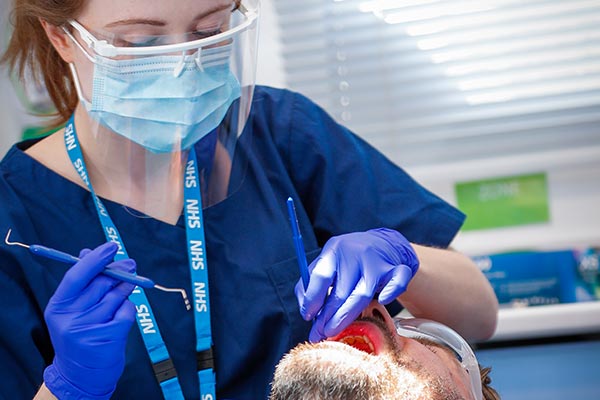New dental project aims to put a smile on patients’ faces
A quality improvement project is aiming to reduce wait times, ensure patients receive the right services and improve patient experience across our dental services.
A review of routine appointment wait times at more than 25 sites identified that there was a wide variation between practices.
Marianne Hearsum, Strategic Dental Director – Quality, said: “We identified an opportunity to work together to ensure we are seeing the right patients in the right service and to improve wait times for those who really need our services.”
Plan, Do, Study, Act (PDSA)
The ‘Right patient, right service’ project used PDSA cycles to make improvements. PDSA cycles allow changes on a small scale to be tested, before they are potentially implemented more widely.
An important area of focus for the team is prioritising patients the trust is commissioned to provide care for and directing others to general dental services. To help, new triage assessment clinics have been launched to review patients before they are accepted for treatment.
Marianne said: “To give an example, in the area of paediatrics, a child can be seen for prevention treatments and simple procedures at their high street dentist, but if they need a tooth removed and are anxious, they might come to us for the extraction, under sedation.
“We are moving to more of a shared care model where we work with patients and general dental services to ensure the right care is provided in the right service.”
Patients who are discharged receive a letter to explain what treatment they need and where they can get it.
“We revamped the discharge letter to make it more patient friendly, for example using pictures and plain language so families understand the range of child friendly treatments which are available,” said Marianne.
Another area of focus for the team is trying to reduce the number of appointments not attended, as these can add up to a significant number of hours lost to the service.
Marianne said: “We’ve reviewed our appointment procedures to try and reduce the failed appointment rates. Sometimes simple changes can lead to a big difference. One of the changes we’ve made is asking patients to call us and book an appointment date and time which suits them, rather than allocating them an appointment.”
Monitoring progress
Marianne and her team share clinical performance data each month so that clinical teams can see the impact the project is having.
“We review wait time and appointment data. This gives clinical teams the opportunity to compare their performance with the rest of the services. Although we’re only at the start of data collection, we’re already seeing some improvements in wait times, which is really pleasing.”
The next steps for the project include a review after three months to see what has and hasn’t worked and identifying clinical teams who need more support to make improvements.
“For me, a successful outcome to this project would be reduced wait times for our patients. We want to ensure that when people are referred to us, they are seen promptly for treatment and then wherever possible returned to the care of a local high street practice,” Marianne said.


